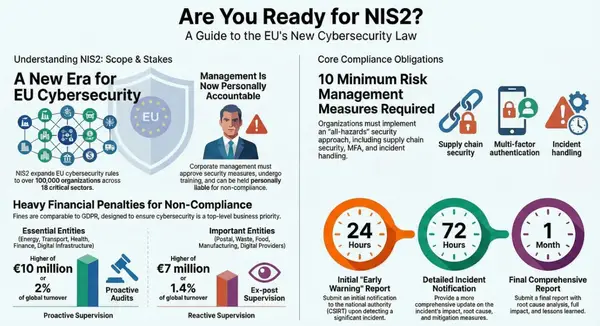Data Breach Response: A Practical Guide for DPOs

In today's digital landscape, data breaches have become an unfortunate reality for organizations of all sizes. The exponential growth of data, coupled with increasingly sophisticated cyber threats, means that it's not a matter of if a breach will occur, but when. For Data Protection Officers (DPOs), being prepared with a comprehensive breach response strategy is not just a regulatory requirement—it's a critical business imperative that can mean the difference between swift recovery and catastrophic damage.
The General Data Protection Regulation (GDPR) has fundamentally transformed how organizations must respond to data breaches, establishing strict notification timelines and comprehensive response requirements. As the designated guardian of data protection within the organization, the DPO stands at the center of this complex process, coordinating response efforts while ensuring compliance with evolving regulatory demands.

Understanding Data Breaches Under GDPR
Defining a Personal Data Breach
The GDPR provides a comprehensive definition of what constitutes a personal data breach: "a breach of security leading to the accidental or unlawful destruction, loss, alteration, unauthorised disclosure of, or access to, personal data transmitted, stored or otherwise processed."
This definition encompasses three types of breaches:
1. Confidentiality Breach: Unauthorized disclosure of or access to personal data 2. Integrity Breach: Unauthorized or accidental alteration of personal data
3. Availability Breach: Accidental or unlawful destruction or loss of access to personal data
Common Breach Scenarios
Understanding typical breach scenarios helps DPOs prepare more effective response strategies:
Cyber Attacks:
- Ransomware attacks that encrypt and steal data
- Data exfiltration by malicious actors
- Phishing attacks leading to unauthorized access
Human Error:
- Misdirected emails containing personal data
- Lost or stolen devices containing unencrypted data
- Misconfigured systems exposing data publicly
System Failures:
- Database corruption leading to data loss
- Backup system failures
- Accidental deletion of personal data
Physical Security:
- Theft of paper records or devices
- Unauthorized physical access to data storage areas
- Damage to physical records (fire, flood, etc.)
The Evolution of Breach Response: From CISO-Led to Multi-Disciplinary Approach
Traditional IT-Centric Incident Response
Historically, data breach response was primarily managed by Chief Information Security Officers (CISOs) through traditional incident response plans focused on technical containment and system recovery. The CISO's role centered on:
Traditional CISO Incident Response Framework:
- Detection and Analysis: Identifying security incidents through monitoring tools
- Containment and Eradication: Stopping the attack and removing threats
- Recovery: Restoring systems and services to normal operations
- Post-Incident Activity: Conducting technical post-mortems and security improvements
This IT-centric approach was effective for addressing the technical aspects of breaches but often overlooked the complex regulatory, legal, and privacy implications that have become central to modern data protection requirements.
The Modern Multi-Disciplinary Reality
Today's breach response landscape requires seamless coordination between CISOs, DPOs, and CCOs, driven by the explosion of global privacy regulations and the recognition that data breaches are as much about regulatory compliance and business risk as they are about technical security.
The New Collaborative Model:
- CISO: Leads technical incident response, containment, and system recovery
- DPO: Manages privacy impact assessment, regulatory notifications, and individual rights
- CCO: Coordinates regulatory compliance across multiple jurisdictions and frameworks
The Regulatory Complexity Challenge
The modern breach response environment is characterized by an increasingly complex web of global, federal, and state-level requirements that organizations must navigate simultaneously. This complexity has fundamentally changed how breach response teams must operate.
Global Compliance Framework Considerations:
The Global Compliance Map illustrates the intricate landscape of international data protection requirements that organizations must consider during breach response. Key regulatory frameworks include:
- GDPR (European Union): 72-hour notification requirements and individual notification obligations
- CCPA and state privacy laws (United States): Varying notification timelines and consumer rights
- LGPD (Brazil): Similar to GDPR with specific Latin American considerations
- PIPEDA (Canada): Federal privacy law with provincial variations
- PDPA (Singapore, Thailand): Asia-Pacific regional requirements
US State Breach Notification Complexity:
The US State Breach Notification Laws have created a patchwork of requirements that significantly complicate breach response for organizations operating across multiple states:
- Varying Timelines: From immediate notification to 30+ days
- Different Triggers: Ranging from "unauthorized access" to "reasonable likelihood of harm"
- Notification Recipients: State attorneys general, affected individuals, credit reporting agencies
- Content Requirements: Specific information that must be included in notifications
- Penalties: Varying enforcement mechanisms and financial consequences






